If you are reading this article, you are probably about to make one of the toughest decisions as a pet owner. Saying goodbye to your beloved dog that was your true companion and best friend for so many years is never easy.
First and foremost, I would like to say that PupVine is here for you, whatever the outcome of your decision is.
Caring for a dog that is extremely sick is tough in itself, not only is it more time-consuming, but you often feel so desperate and helpless because there is not much for you to do to actually help your pooch.
Liver failure is definitely one of those gut-wrenching diseases that often puts dog owners at a crossroads. Should or should you not euthanize your dog, and if so, how do you even know when to euthanize a dog with liver failure?
In this article, you will find everything you need to know about dog liver failure and learn when is the right time to consider euthanasia.
When To Euthanize A Dog With Liver Failure?

As a parent of a dog that suffers from liver failure, you probably experienced some bad and some good days. There have probably also been days when you thought that there was no point in continuing anymore.
Liver failure is a truly agonizing process, especially for dogs in the final stage of the disease and with a ss than 20% chance of surviving. However, it is never easy to decide to euthanize your dog, and we completely understand your struggle.
When to euthanize a dog with liver failure?
Unfortunately, I cannot give you a definitive answer since every case and every dog is different. I don’t know you and your dog personally, nor your living situation, however, I can give you some guidance that can help you make the right decision.
If you need help, talk to your family, friends, and seek professional advice since this is not an easy decision. An objective opinion may be very helpful in this situation.
The best way to decide when is the right time and whether you should do it is to look at your dog’s current quality of life. Is your dog’s pain unbearable? Do you still see even a little bit of light in his eyes? Can your dog eat, drink, and go potty?
These are just some of the important questions that you should take into consideration before making this big decision. This HHHHHMM Quality of Life Questionnaire is a great tool that can help you evaluate your dog’s life as objectively as possible.
Asking for help and advice is completely understandable in this kind of situation. I’m sure that deep down, we all know when is the right time, but we are just afraid to admit it. Liberating the dog from unbearable suffering can be more humane than anything else you can do.
Dog Liver Failure: Causes, Symptoms & Treatment

The dog’s liver is one of the vital organs that has a very important role in a dog’s health. Next to the kidney, heart, lungs, and brain, it definitely has one of the central roles in the dog’s body.
The liver is a very complex organ with a lot of functions that are essential for keeping your dog alive in the first place. It also has an amazing capability of self-healing, which provides great protection against many diseases.
There are more than 500 functions that are associated with the liver; however, the most important ones are definitely the regulation of chemicals and substances in the blood, production of bile acids for digestion, detoxification of the body, and supporting the immune system.
Since the liver is included in many processes, it is also susceptible to various different diseases. Liver failure occurs when the liver is not working properly, thus it is not able to perform its life-important functions.
There are two main forms of canine liver failure:
• Acute liver failure – the loss of liver functions that happens very quickly, in a couple of days or weeks
• Chronic liver failure – the loss of liver functions that happens over a long stretch of time
What Can Cause A Liver Failure?
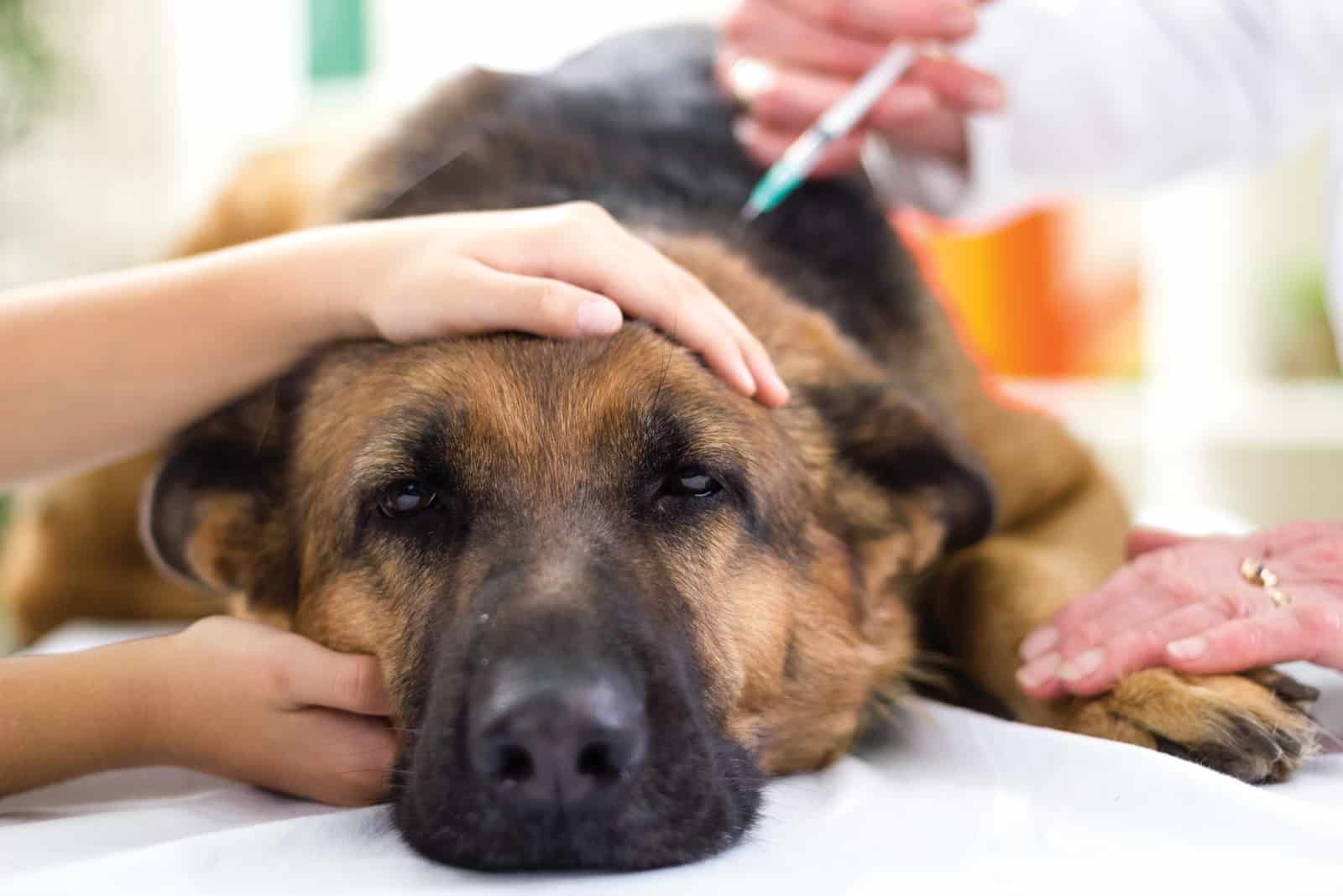
A lot of things can cause liver diseases and canine liver failure. Unfortunately, dogs of all ages, sizes, and breeds can be affected since some of the diseases can actually be inherited, and your pup might carry its genes from their birth. Otherwise, these diseases can also be acquired.
Genetic Liver Abnormalities
• Portosystemic shunts (PSSs) are the most common liver abnormality seen in dogs. It causes blood to divert around the liver and therefore decrease its functionality and increase the level of toxins in the body. It can either involve intrahepatic or extrahepatic vessels.
Intrahepatic shunts are more seen in large dog breeds such as Labrador Retrievers, German Shepherds, or Doberman Pinschers. Small dog breeds, such as Yorkshire Terriers, Cairn Terriers, and Miniature Schnauzers, on the other hand, are much more predisposed to extrahepatic shunts.
• Copper-Storage Hepatopathy is a condition that can actually affect both cats and dogs. It results from an abnormal accumulation of copper in the dog’s liver that leads to damage and scarring of the liver.
Some breeds, such as Bedlington Terriers, Labrador Retrievers, West Highland White terriers, Skye Terriers, and Doberman Pinschers, are more susceptible to this disease; however, we have to mention that it usually affects more female dogs than males.
• Hepatoportal Microvascular Dysplasia (also called portal vein hypoplasia) is a genetic abnormality of the liver where the microscopic blood vessels are underdeveloped or even absent, which leads to atrophy and a reduced ability to process toxins or produce proteins.
Yorkshire Terriers and Cairn Terriers are two breeds that are most commonly affected by this disease.
Acquired Liver Diseases
Unlike genetic liver diseases that usually present very early in a dog’s life, acquired liver diseases are more common in middle-aged and older dogs, apart from some unexpected traumas. The most common cause of acquired liver failure are:
• Viral infections: Canine Adenovirus Type 1 (CAV-1)
• Bacterial infections: Leptospirosis, Salmonella
• Parasitic infections: Heartworms, Protozoa
• Fungal infections: Histoplasmosis, Blastomycosis, Coccidioidomycosis
• Drug reactions
• Toxic substances
• Liver cancer
• Diabetes
• Heatstroke
• Pancreatitis
Drugs That Cause Liver Failure In Dogs
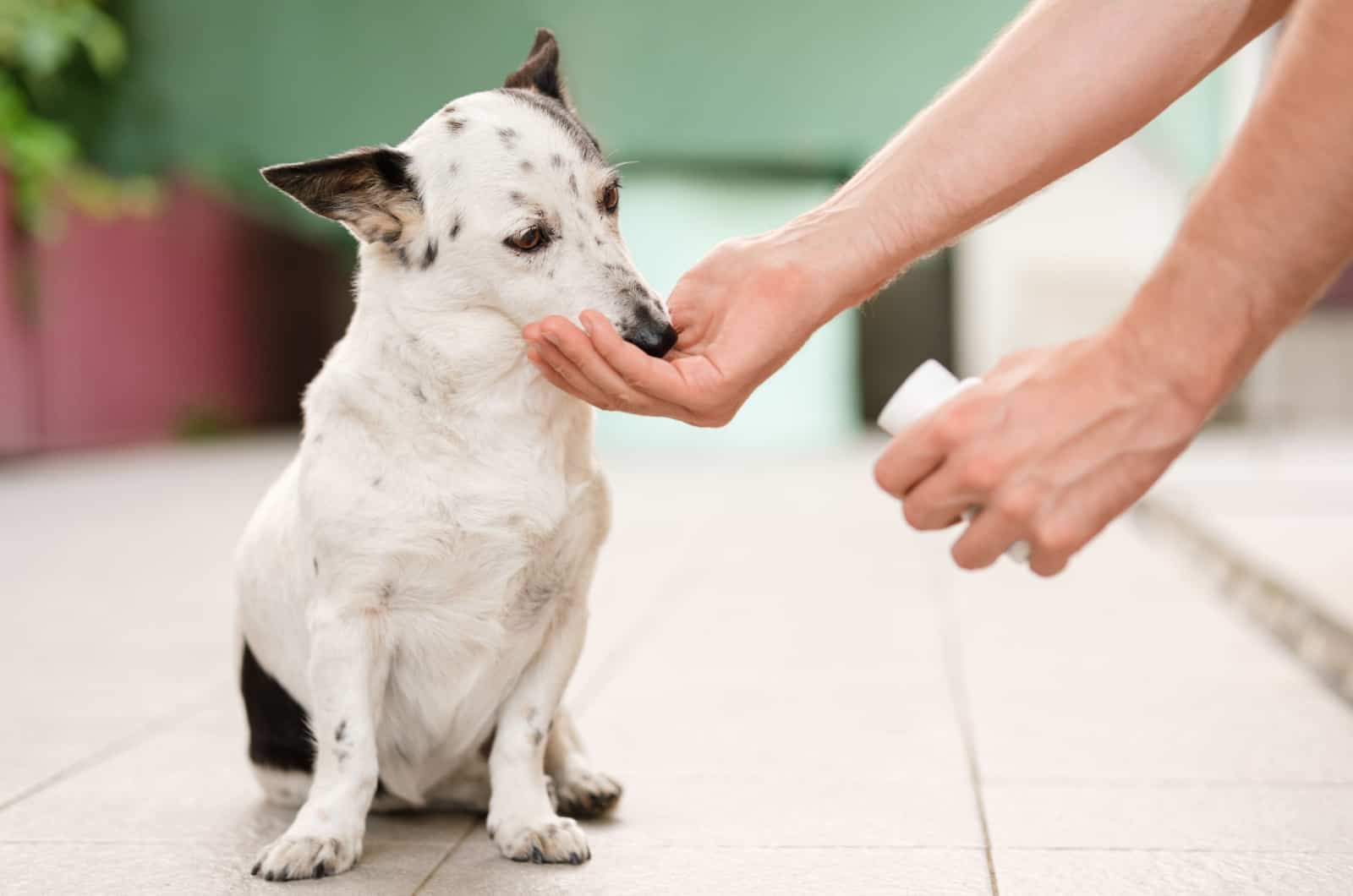
Drugs are very often the cause of hepatic injury in both canines and felines. Usually, most drugs cause acute hepatic injury; however, there are some that even cause chronic hepatic injury.
Unfortunately, there are a lot of drugs that can cause liver problems in dogs, and there is no way of actually predicting which dogs will have a drug reaction and which will not. Some dogs will be completely fine, whereas others will experience major problems.
Since there are a lot of drugs out there that can cause potential liver problems, we will mention only the most common ones, however, you can find more about it in Acute liver failure in dogs and cats by Molly A. Weingarten DVM and Allison A. Sande DVM.
• Non-steroidal anti-inflammatory drugs (NSAIDS): Carprofen, ibuprofen, aspirin
• Sulfonamides: trimethoprim-sulfa, sulfasalazine
• Antiadrenal drug: Lysodren
• Antifungals: ketoconazole
• Immunosuppressants: Azathioprine
• Acetaminophen toxicity: Tylenol, Paracetamol
Toxic Substances That Cause Liver Failure In Dogs
Dogs are known for eating a lot of things that are not good for them, even toxic. A lot of food containing toxic substances should be kept away from the dog’s reach because they can cause liver failure. Here is a list of the most common ones:
• Xylitol (sugar alcohol commonly used as a sweetener in many human foods)
• Amanita Mushrooms (wild growing fungi)
• Blue-Green Algae (bacteria that grows in water)
• Sago Palm Plants (substance cycasin present in the plant is extremely toxic to dogs)
• Aflatoxin (toxins that are produced by certain molds)
• Pennyroyal oil (herbal extract used as a repellent and as a folk remedy)
What Are Some Symptoms Of Liver Failure?

Dogs with liver failure will experience several signs and symptoms of the disease:
• Lethargy or fatigue
• Loss of appetite
• Weight loss
• Disorientation
• Diarrhea
• Nausea and vomiting
• Increased urination
• Increased or decreased thirst
• Shaking
• Increased panting
• Strong breath odor
• Strange behavior
• Yellow discoloration (skin or eyes)
• Constipation, gas, and bloat
• Jaundice
• Blood clotting
• High fever
• Spontaneous bleeding
• Dry, brittle, or infected nails
Many dog owners don’t notice a lot of these signs of liver failure until it is too late already, so it is very important to monitor your dog’s behavior and be aware of the slight changes in their appetite, behavior, or looks.
If you are concerned about your dog’s health or have an inkling that something is not right, it is always better to consult your veterinarian because acute liver failure can develop really quickly, and the sooner it is diagnosed, the better.
READ ALSO: 15 Signs A Dog Is Dying: When Should You Say Goodbye?
Is There Treatment For A Failing Liver?
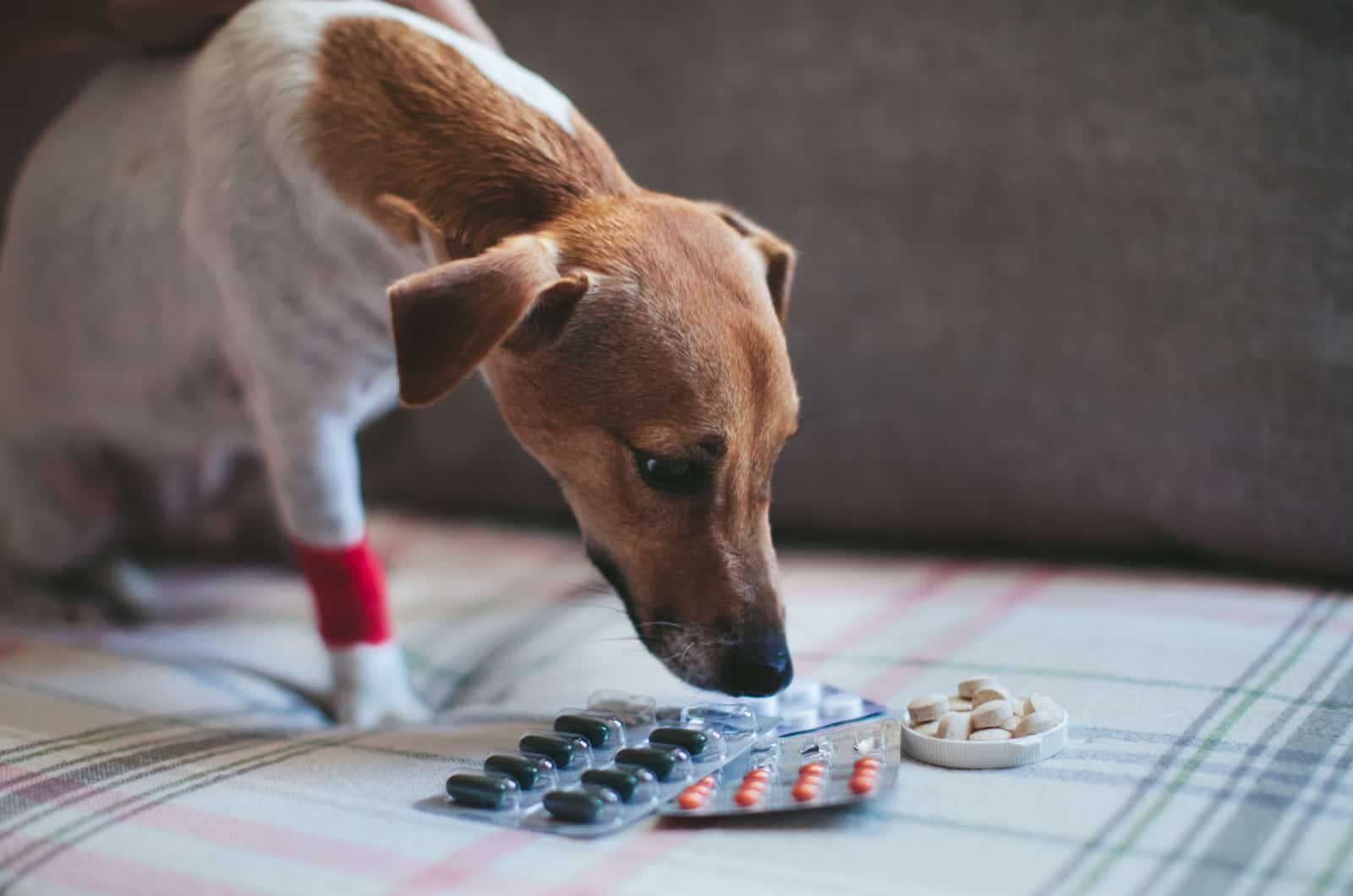
The treatment of canine liver failure depends greatly on the stage of liver failure. Unfortunately, for those dogs with end-stage liver failure, there is not much that can be done except try to minimize the pain, treat symptoms, and the underlying cause of the failure, if there is one.
This “treatment” usually includes pain medication or anti-nausea medication, but this is only for making some of the symptoms less painful for dogs and getting through really bad days. The progression of the disease can be really quick, especially if it was diagnosed too late.
The only thing you can do is provide your pup with lots of love and affection and try to make the rest of his life as good as possible.
However, if the liver disease is diagnosed early, there is a little bit of hope for your dog. With proper treatment, dogs with liver disease can live up to a few years.
Your dog will probably be ordered to rest a lot and do very minimum activity in order to give the liver an opportunity to regenerate.
The vet will probably prescribe your dog a special diet (dog food with supplements and vitamins E and K) that is easy to digest, helps prevent the occurrence of neurological symptoms, and improves the dog’s overall quality of life.
RELATED: What To Feed A Sick Dog With No Appetite: We Are Here To Help You
SAMe (s-adenosylmethionine) and Silybin are two types of supplements that are very beneficial for dogs that suffer from liver diseases because they help reduce liver damage and slow down the progression of the disease.
The most common medications used for treating liver failure include antiemetics, hepatoprotectives, coagulopathy drugs, and antioxidants.
Stages Of Liver Failure
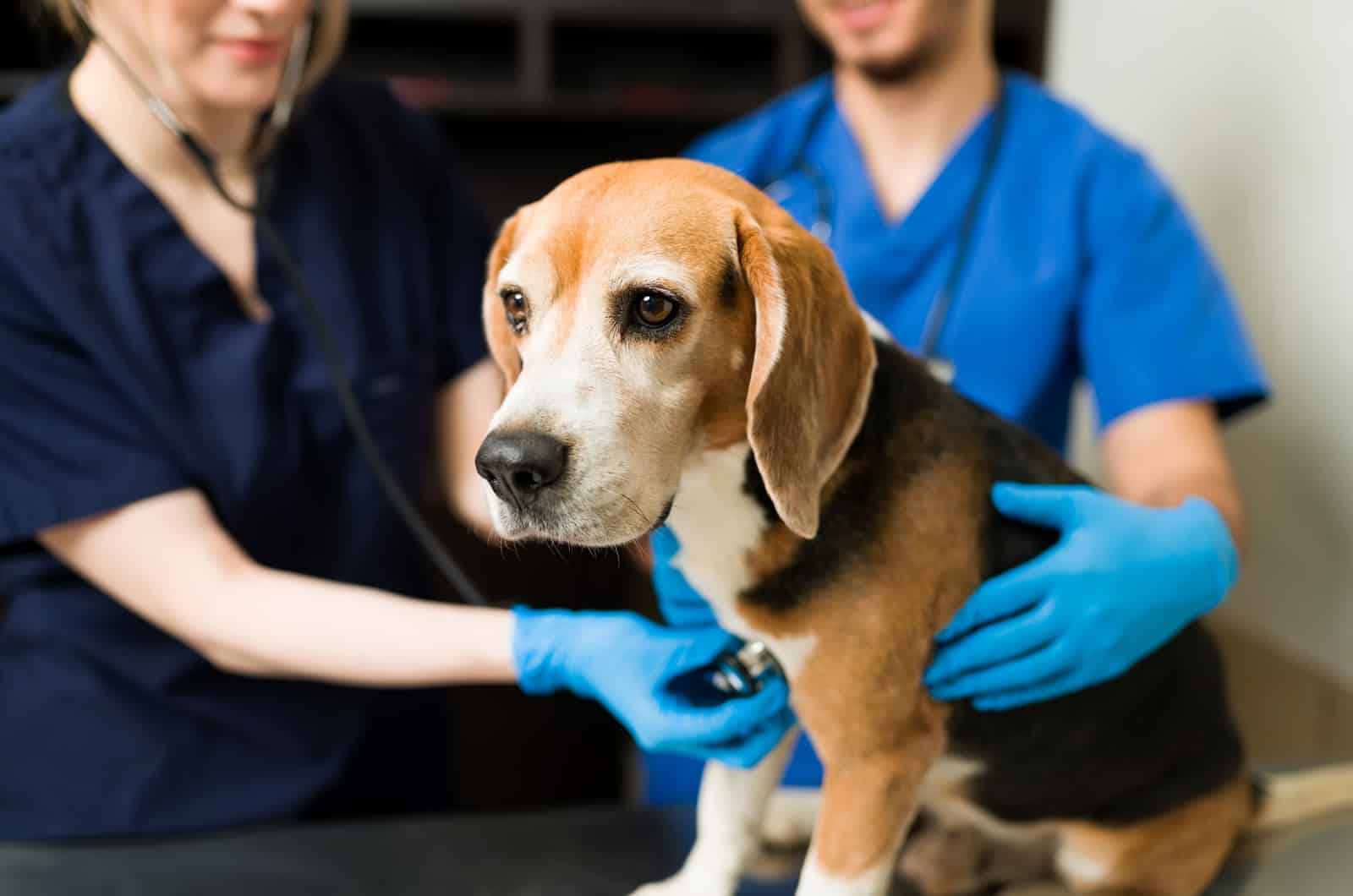
Early Stages
In the early stage of liver disease, there is usually a certain inflammation caused by some underlying issue. When a certain organ becomes inflamed, it usually means that it is trying to fight an injury or infection, and the same goes for the liver.
At this stage, the liver is still able to work to a certain degree and the symptoms are usually hard to detect. Your dog might just be more fatigued than usual or you may notice a slight change in his appetite. Sometimes, dogs can also be nauseous or experience vomiting.
If you notice any slight change in your dog’s behavior, it is always better to visit a veterinarian. Although symptoms might be minimal, if the vet does a thorough examination, he might be able to detect liver failure.
If diagnosed early, it is possible to find the source or the underlying issue and by treating it, slow down the disease and the liver damage. Usually, vets will prescribe some medication or a special diet.
Middle Stages
The second stage of liver failure progression is characterized by some more obvious signs. This is the part when the liver stops functioning normally. The inflamed liver begins to harden or scar, turning the healthy tissue into scar tissue, which is known as liver fibrosis.
Fibrosis will restrict the blood flow and therefore cause further damage to the liver. Some of the symptoms that you might notice include the condition of jaundice (yellowish discoloration of the skin and eyes) and distended abdomen (severe abdominal enlargement).
When the liver is healthy, it normally produces a protein called albumin that regulates blood volume, however, when the liver is damaged, it cannot produce this protein anymore, which leads to fluid leakage in the abdomen, causing this abdominal distention.
At this stage, it is still possible to detect blood abnormalities through blood tests and start the treatment that might have an impact on the condition and the dog’s quality of life.
End Stages
In the final stage, the symptoms become a lot more serious and painful for the dog. The scar tissue has already left a permanent mark on the liver, which in the medical field is known as canine cirrhosis.
Once cirrhosis occurs, scar tissue replaces healthy and functioning liver cells, which means that the liver cannot function properly anymore.
The most common symptoms of end-stage liver disease include loss of appetite, vomiting, seizures, disorientation, wobbliness, blindness, dizziness, and other neurological abnormalities.
This condition is known as hepatic encephalopathy and as you might have already guessed, it is life-threatening.
Since the liver is no longer capable of metabolizing proteins and performing its important function of getting rid of the toxins from the body, the buildup of toxins quickly occurs, which leads to these neurological side effects.
Sadly, there is not much that can be done in this final stage of liver failure apart from making your dog as comfortable as possible. Your veterinarian may give you something to help the dog with the pain, but unfortunately, there isn’t anything that would cure your dog.
Your dog might experience some good days and some really bad days, and you’ll have to get used to it because it is very normal with this disease. The important thing is that you try everything to show your doggie that you’re there for him and that you love him.
The vet will also prepare you for the worst because, in severe cases, there usually is not much time left for your pup.
RELATED: All About Dog Behavior Before Death: 14 Signs Explained
Testing For Canine Liver Failure
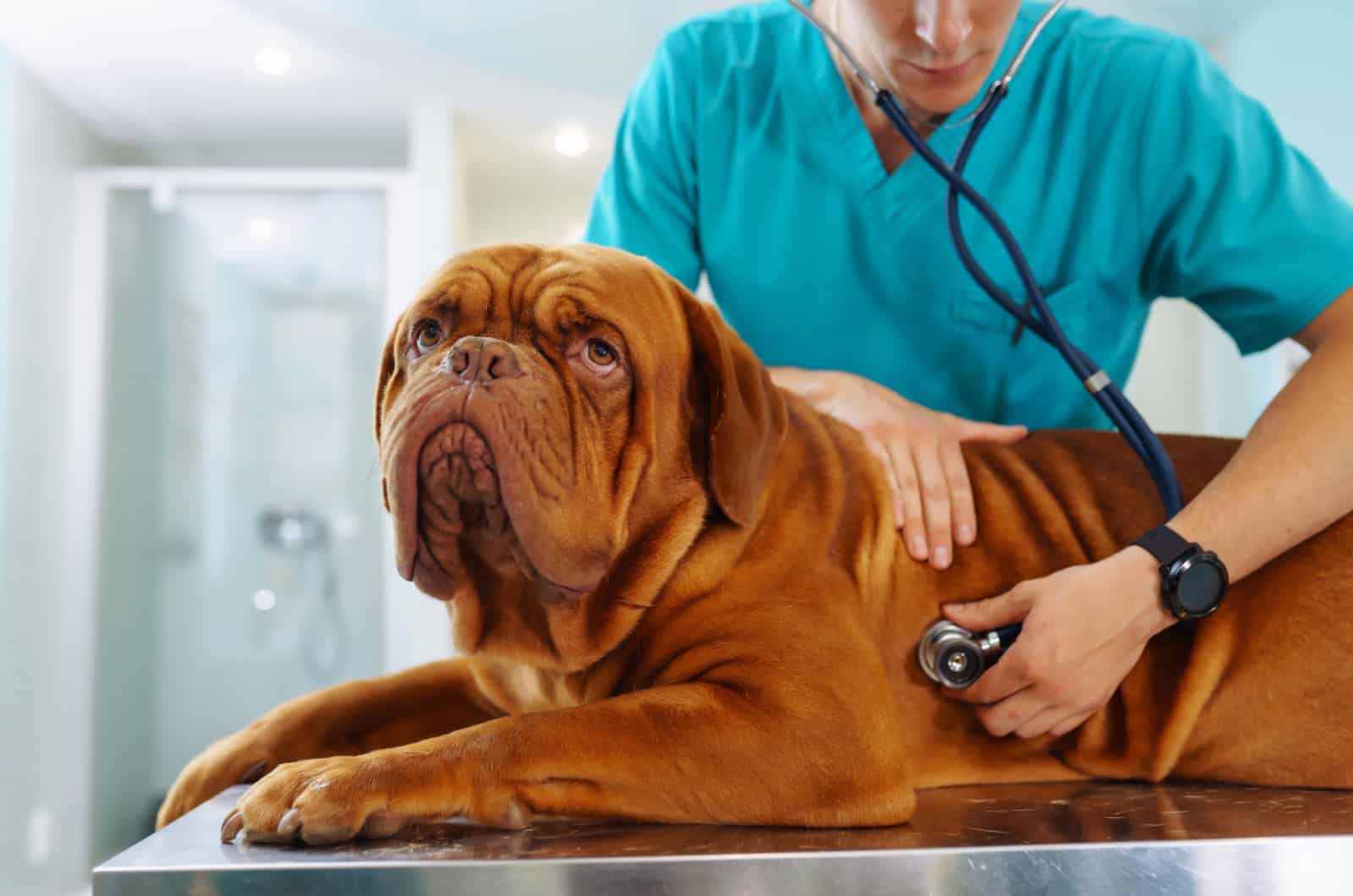
In order for a veterinarian to diagnose canine liver failure, he or she must perform several screening tests alongside a physical exam to determine the existence of the disease. It is recommended to do the following tests:
• A physical exam – may reveal different findings that indicate liver diseases, such as yellow skin, weight loss, abdominal pain, shrunken or enlarged liver, and swelling of the abdomen
• The complete blood count (CBC) – a blood test that involves the evaluation of many parts of your dog’s blood, including the red blood cells, the white blood cells, and the platelet components
• The serum biochemistry profile – shows any changes in liver enzymes (elevated levels of ALT (alanine aminotransferase) enzyme) and protein levels that might indicate a liver disease
• Urinalysis – abnormal amount of bilirubin or the presence of specific crystals in the urine may indicate liver disease
• The serum bile acid test – the special blood test that evaluates the normal functioning of your dog’s liver
• Abdominal ultrasound – gives a detailed look at the liver and surrounding organs (can indicate diseases such as pancreatitis or abnormal blood vessels)
• Abdominal X-rays – show the overall size and shape of the liver and point to some abnormalities
• Liver biopsy – the analysis of affected tissue that usually identifies the disease
How Long Can A Dog Live With A Failing Liver?

One of the first things that every pet owner of a dog suffering from liver failure asks is definitely how long can a dog live with this kind of disease. The dog’s life expectancy greatly depends on the underlying cause of the disease, the stage of the disease, and possible treatments.
As we have mentioned previously, if the disease is diagnosed early on, there is a greater chance of successful treatment. If lucky, the dog with liver disease can live anywhere from several months to even a few years.
However, if the disease has progressed to its final stage, there is not much that can be done. Acute liver failure progresses very quickly, and sadly your dog might have only a couple of days to live.
The only thing you can do is try to manage the pain and maintain a good quality of life as much as possible.
Harsh as it may sound, if the dog’s quality of life is severely impaired, it might be time to say goodbye.
Saying Goodbye

Saying a final goodbye to your beloved dog is never easy, nor will it ever be. First of all, make sure that you choose the best veterinary clinic that will make the process easier for the dog and for you.
If you are worried that it will hurt your little pet, we can assure you that it is completely painless.
Regarding the process, you’ll be first asked to sign an authorization paper for euthanasia or a document similar to this.
You can either decide to be present during the euthanasia, be completely absent, or see your pet after the euthanasia. This procedure is usually done by a veterinarian, and it is very quick and simple. Your dog will be peacefully asleep within seconds.
Euthanasia is most commonly done through an injection of anesthetic overdose. After euthanasia, you have to decide what to do with the remains, for example, burial or cremation.
Knowing what to expect and what you have to do will put you at ease and provide you with peace.
RELATED: Where to Euthanize A Dog For Free In The U.S. – 10 Places You Can Ask
Coping With The Loss Of A Pet

Grieving the loss of a pet is completely normal, especially when it comes to euthanasia. Even when you know that you have done the right thing, you cannot escape the feeling of guilt which just doubles your pain and sadness.
Grief is the most natural thing, but you should never let yourself feel guilty. You have done everything in your power to help your pooch and make his life more comfortable.
However, sometimes, like in the case of end-stage liver failure, there is practically nothing that you can do to help your pup feel better. Grief is definitely not a one-size-fits-all matter since we all cope differently with the loss of our loved ones, but there are some things that might help you:
• Acknowledge the loss – Let yourself understand that you have done the best thing for your dog, who was suffering so much that he couldn’t live normally. Take your time and be gentle to yourself.
• Accept your pain and emotions – The best way to deal with the loss of your beloved pet is to acknowledge and accept all emotions that you are feeling rather than trying to run away from them.
• Embrace the memories – Although it may be hard to think about it, memories are the most special thing that no disease can take away from you. Put up those beautiful pictures on the wall or make an album with the happiest moments that you can always look at with a smile on your face.
• Accept the change – Your house will never be the same again, nor will you be the owner of “Fido” or “Fiona” again, and you must simply accept the true reality. Living in the past is never good for the grieving process.
• Accept the support -The love and support from other pet owners that have experienced the same thing or just from the people that love you are crucial for your grief.
Although we usually hate asking for help and support, it is always beneficial to have that one person that will be with us no matter what. Cliche as it may sound, time heals all wounds, and you’ll definitely feel much better after some time has passed.
Life Goes On
When to euthanize a dog with liver failure? I truly hope that as few dog owners as possible will find themselves searching for this answer, however, if you are, I also hope that this article has helped you at least a little bit to find the right answer.
Liver failure is definitely one of the worst and the most unpredictable canine diseases. Dogs can go from their happy-go-lucky personality one day to dying in the span of a couple of days.
Unfortunately, if the disease is diagnosed too late, the chance of survival is very little. Looking at your dog suffering more and more each day is not easy at all, so a lot of owners decide to do the most humane thing there is – euthanizing the dog.
Although it may sound harsh, sometimes this is the only thing that can help your dog since dying in excruciating pain is not something that any owner wants for their beloved pup.
Make sure to always consult your veterinarian before making any final decision.
Read Next
• Infected Dog Spay Incision Healing Process: What Happens After Spay Surgery?
• Help, Cerenia Killed My Dog – Shedding Light On The Matter
• Dog Kidney Failure: When To Euthanize? The Hardest Decision
